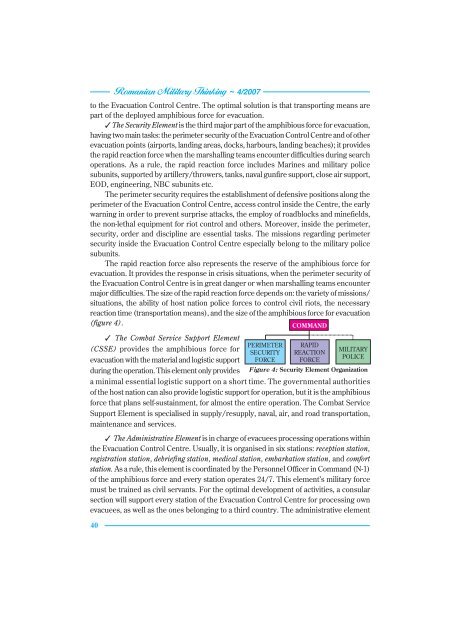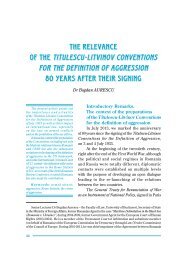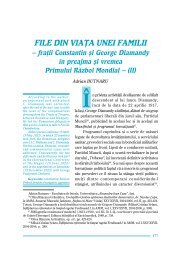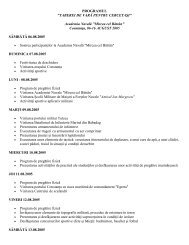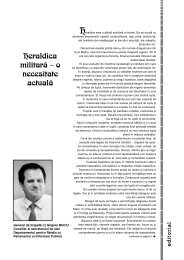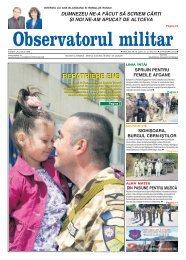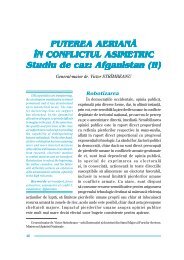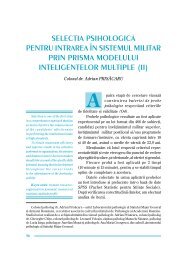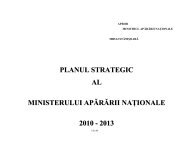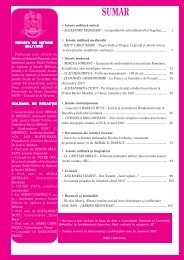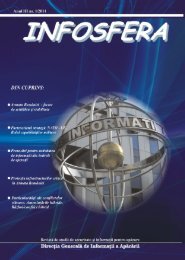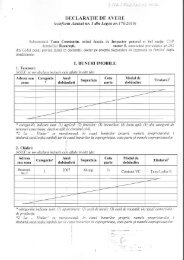Romanian Military Thinking
Romanian Military Thinking
Romanian Military Thinking
Create successful ePaper yourself
Turn your PDF publications into a flip-book with our unique Google optimized e-Paper software.
40<br />
<strong>Romanian</strong> <strong>Military</strong> <strong>Thinking</strong> ~ 4/2007<br />
to the Evacuation Control Centre. The optimal solution is that transporting means are<br />
part of the deployed amphibious force for evacuation.<br />
The Security Element is the third major part of the amphibious force for evacuation,<br />
having two main tasks: the perimeter security of the Evacuation Control Centre and of other<br />
evacuation points (airports, landing areas, docks, harbours, landing beaches); it provides<br />
the rapid reaction force when the marshalling teams encounter difficulties during search<br />
operations. As a rule, the rapid reaction force includes Marines and military police<br />
subunits, supported by artillery/throwers, tanks, naval gunfire support, close air support,<br />
EOD, engineering, NBC subunits etc.<br />
The perimeter security requires the establishment of defensive positions along the<br />
perimeter of the Evacuation Control Centre, access control inside the Centre, the early<br />
warning in order to prevent surprise attacks, the employ of roadblocks and minefields,<br />
the non-lethal equipment for riot control and others. Moreover, inside the perimeter,<br />
security, order and discipline are essential tasks. The missions regarding perimeter<br />
security inside the Evacuation Control Centre especially belong to the military police<br />
subunits.<br />
The rapid reaction force also represents the reserve of the amphibious force for<br />
evacuation. It provides the response in crisis situations, when the perimeter security of<br />
the Evacuation Control Centre is in great danger or when marshalling teams encounter<br />
major difficulties. The size of the rapid reaction force depends on: the variety of missions/<br />
situations, the ability of host nation police forces to control civil riots, the necessary<br />
reaction time (transportation means), and the size of the amphibious force for evacuation<br />
(figure 4). COMMAND<br />
The Combat Service Support Element<br />
(CSSE) provides the amphibious force for<br />
evacuation with the material and logistic support<br />
during the operation. This element only provides<br />
PERIMETER<br />
SECURITY<br />
FORCE<br />
RAPID<br />
REACTION<br />
FORCE<br />
MILITARY<br />
POLICE<br />
Figure 4: Security Element Organization<br />
a minimal essential logistic support on a short time. The governmental authorities<br />
of the host nation can also provide logistic support for operation, but it is the amphibious<br />
force that plans self-sustainment, for almost the entire operation. The Combat Service<br />
Support Element is specialised in supply/resupply, naval, air, and road transportation,<br />
maintenance and services.<br />
The Administrative Element is in charge of evacuees processing operations within<br />
the Evacuation Control Centre. Usually, it is organised in six stations: reception station,<br />
registration station, debriefing station, medical station, embarkation station, and comfort<br />
station. As a rule, this element is coordinated by the Personnel Officer in Command (N-1)<br />
of the amphibious force and every station operates 24/7. This element’s military force<br />
must be trained as civil servants. For the optimal development of activities, a consular<br />
section will support every station of the Evacuation Control Centre for processing own<br />
evacuees, as well as the ones belonging to a third country. The administrative element


